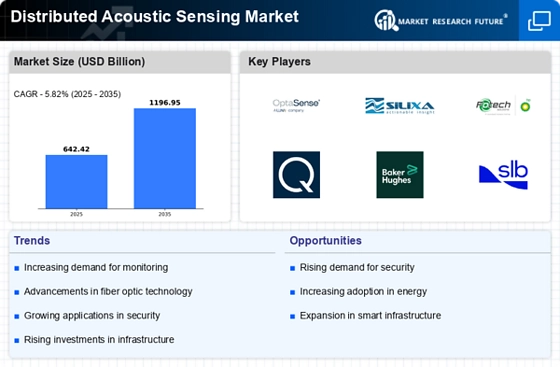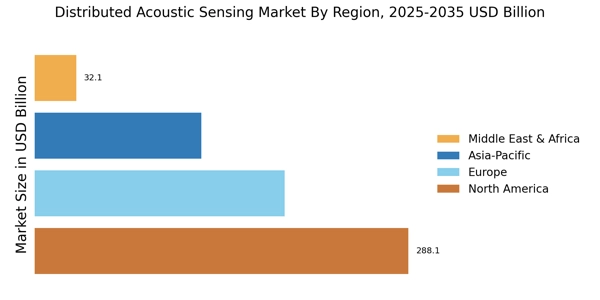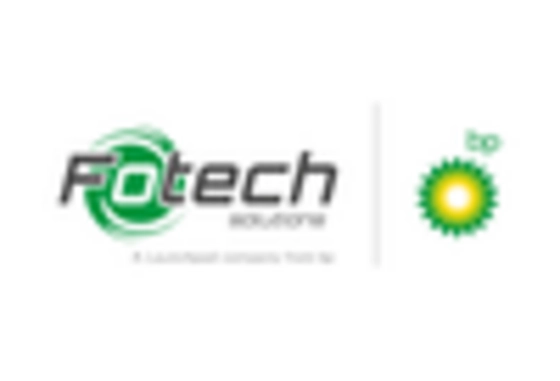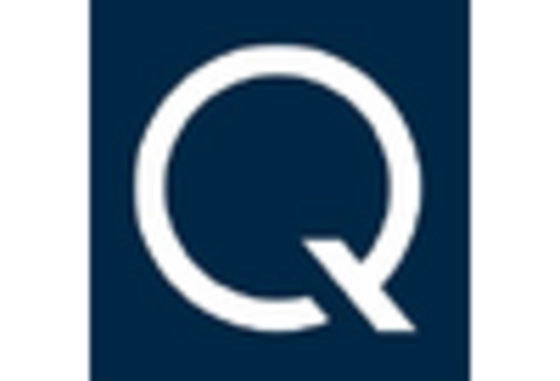Integration with AI and Machine Learning
The integration of artificial intelligence and machine learning into the Distributed Acoustic Sensing Market is transforming how data is analyzed and interpreted. By leveraging AI algorithms, companies can process vast amounts of acoustic data in real-time, leading to quicker decision-making and enhanced operational efficiency. This integration allows for predictive maintenance in industries such as energy and utilities, where early detection of anomalies can prevent costly downtimes. Furthermore, machine learning models can continuously improve their accuracy as more data is collected, creating a feedback loop that enhances system performance. As organizations increasingly adopt these technologies, the market is expected to witness a significant uptick in demand, with estimates suggesting a potential market size exceeding $1 billion by 2026.
Increased Focus on Environmental Monitoring
The Distributed Acoustic Sensing Market is increasingly focused on environmental monitoring, driven by heightened awareness of environmental issues and regulatory pressures. Industries such as oil and gas, mining, and agriculture are adopting Distributed Acoustic Sensing Market technologies to monitor environmental impacts and ensure compliance with regulations. These systems can detect changes in acoustic signals that may indicate environmental disturbances, such as soil erosion or water contamination. As companies strive to meet sustainability goals and reduce their ecological footprint, the demand for effective monitoring solutions is likely to grow. This trend is expected to contribute to the overall expansion of the market, with projections indicating a potential increase in market size by over 25% in the coming years.
Rising Investments in Infrastructure Development
The Distributed Acoustic Sensing Market is benefiting from rising investments in infrastructure development across various regions. Governments and private entities are increasingly allocating funds for the construction and maintenance of critical infrastructure, such as roads, bridges, and pipelines. This investment trend is driven by the need for enhanced safety, efficiency, and sustainability in infrastructure projects. Distributed Acoustic Sensing Market technologies play a vital role in monitoring the structural integrity of these assets, providing real-time data that can inform maintenance decisions and improve safety protocols. As infrastructure projects become more complex, the demand for advanced monitoring solutions is expected to rise, potentially leading to a market growth rate of approximately 15% over the next several years.
Growing Demand for Real-Time Monitoring Solutions
The Distributed Acoustic Sensing Market is witnessing a growing demand for real-time monitoring solutions across various sectors. Industries such as oil and gas, transportation, and infrastructure are increasingly adopting these systems to enhance safety and operational efficiency. Real-time monitoring enables companies to detect and respond to potential issues before they escalate, thereby minimizing risks and reducing operational costs. For example, in pipeline monitoring, Distributed Acoustic Sensing Market can identify leaks or intrusions almost instantaneously, allowing for swift corrective actions. This trend is further supported by regulatory requirements for enhanced safety measures, which are driving investments in monitoring technologies. As a result, the market is anticipated to expand significantly, with a projected growth rate of around 18% annually over the next few years.
Technological Advancements in Sensing Technologies
The Distributed Acoustic Sensing Market is experiencing a surge in technological advancements that enhance the capabilities of sensing technologies. Innovations in fiber optic technology, signal processing, and data analytics are driving the development of more efficient and accurate sensing systems. For instance, the integration of advanced algorithms allows for improved noise reduction and signal clarity, which is crucial for applications in various sectors such as oil and gas, transportation, and security. As these technologies evolve, they enable the deployment of Distributed Acoustic Sensing Market systems in previously inaccessible environments, thereby expanding market opportunities. The market is projected to grow at a compound annual growth rate of approximately 20% over the next five years, indicating a robust demand for these advanced sensing solutions.

















Leave a Comment